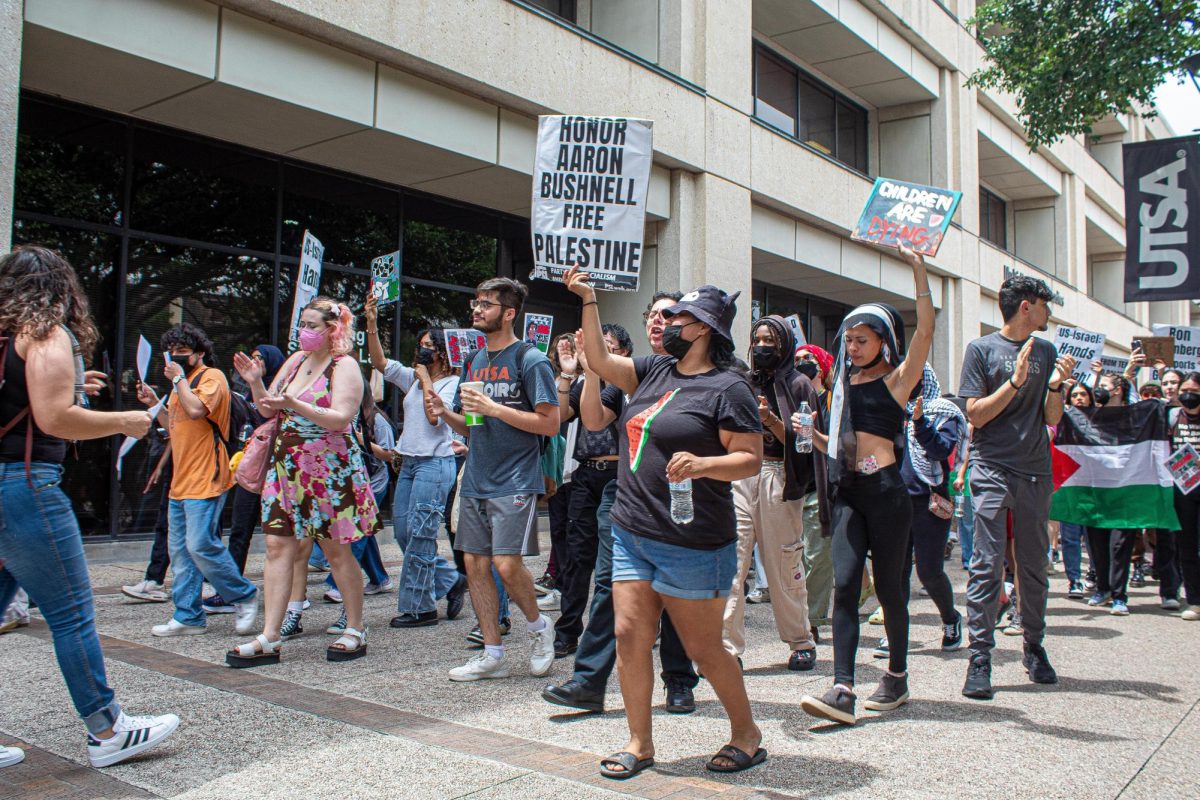This summer the UTSA Student Government Association will begin its transitional period. President Andrew Hubbard, senior finance major and Vice President William “Frankie” Trynoski, senior, political science major, hope to address a new set of goals and concerns voiced by the student body that went untouched in the last administration.
Voter turnout in the spring 2016 election was low, with only 2.6 percent of all registered students participating.
Every UTSA student contributes to the SGA budget with a portion of the Student Activity Fee they’re assessed.
The new SGA administration is aiming to work on student-centered goals for the 2016-2017 year, specifically through the “One-on-One” campaign.
The initiative’s objective is to survey students about their concerns, facilitating conversations about how to alleviate problems on campus.
“If students don’t come to us, we can’t make this step to gather information on what’s going on,” Trynoski said.
Hubbard added “Our ‘One-on-One’ campaign is an initiative to get all SGA members to reach out to students each week applying our surveys to gauge where students’ interests are.”
SGA’s goal to reach at least 1,000 students each year. The surveys are crafted by SGA members and outside resources to maintain unbiased language as well as clarity.
Hubbard believes that surveys will accurately identify students’ priority issues.
Some goals are to improve academic advising and approach student affairs issues they feel have gone unaddressed during previous administrations.
“The advising line is ridiculous,” Hubbard said. “We want for students to have better access to their advising needs instead of waiting hours for assistance.
“Our incoming freshmen need access to their advising needs, while our transfers have a whole other world of orientation and advising that needs to be easier to participate in.”
The potential for the SGA to physically change the wait times for advising is “outside of (our) ability,” Trynoski explained. However, SGA plans to address this problem by bringing ideas for solutions to light and seeking student input.
Some students have voiced concerns about previous SGA administrations ignoring the needs of the downtown campus. “I don’t recall ever having been reached out to by SGA to discuss downtown campus priorities,” said UTSA public administration graduate student Jorge Villareal, who takes classes exclusively downtown.
The Downtown Task Force is group of SGA members and senators charged with communicating the needs of downtown students like accessibility to advising, child care, orientation services and food options to the rest of the SGA.
Without proper outreach, Villareal is concerned that this perpetuates student apathy, which leads to problems such as uncontested and vacant SGA positions.
“The student voice is the most valuable voice,” Trynoski said. “The downtown campus is a continued priority that we are working within our limitations to address concerns of the student body,” Trynoski said.
“(UTSA is) limited with space and funding to build centers for child care or upgrade food services, but our Downtown Task Force is working to continue addressing any new concerns students may have. We have members in the Task Force that are proportional to the population downtown, and those students are the best equipped to relay ideas to us.”
Last year’s SGA budget, published on the SGA website indicates large sums that are not accounted for in tangible or published results by the SGA members themselves. Nine out of the 19 published accomplishments completed last year were SGA-centered accomplishments, while others were communication-based accomplishments (surveys, general meetings, One-on-One student talks, office hours etc.)
However, SGA explains that this money went to organizing events and initiatives that would allow students to be more connected to SGA.
“Most of our accomplishments were made through communication,” Hubbard said. “We have a part of our budget that focuses on PR and how we reach out to students.”
“When we outreach to students, it costs money. To host events and reserve a room that room costs money. To attract students, the free pizza we offer costs money. Most of our scrutiny comes from the $5,000 on the voting software, which Student Activities covers $2,000. (The SGA) are looking at our budget and the money we spend on composites and what past administrations have spent (their) budget on,” Trynoski said.
“We’re shifting our budget to focus more on student life and student centered activities,” Hubbard said. “We spend a large and significant amount of time training and growing through the years. When we walk into a meeting, we represent the student body. If we don’t know how to work in a professional meeting, then we can’t represent the student populous well. The impression we make is how we can grow coalitions and open potential opportunities for the students.”
SGA wants students to know they are “financially accountable,” and are working diligently to review their previous expenditures to maintain transparency in the organization.
As SGA shifts gears toward solving student concerns, SGA wants to make itself “more available and accessible to students. “
“We are looking at possibilities of making our general assemblies and meetings digital and available to livestream,” Trynoski said. “We’re working on starting a Youtube channel so students who can’t join us at the main campus can get connected on their own time.”
Currently, SGA is working on an external project with 10 other colleges in an unrecognized council called the San Antonio Higher Education Representative Association (SAHERA), a coalition of elected student leaders from several colleges with the intent to have a singular representative voice of students in San Antonio. “We’ve worked with each city councilor, including the mayor, and we have good feedback on what our intentions are as a group,” Trynoski said. SAHERA is hoping to become a city-recognized organization and have student representatives who work with city council to increase student input on city council decisions.
Internally, Hubbard and Trynoski have a new goal that is uniquely important to veteran students.
“The veteran center is small,” Hubbard said. “We owe these students better to provide them with their catered advising. There are financial and space limitations, but it’s something we want to continue pushing for. We want students to know we’re transparent,” Hubbard said.
“We want to be accessible and ready to serve the student body, which is why (Trynoski and I) ran for these positions.”












